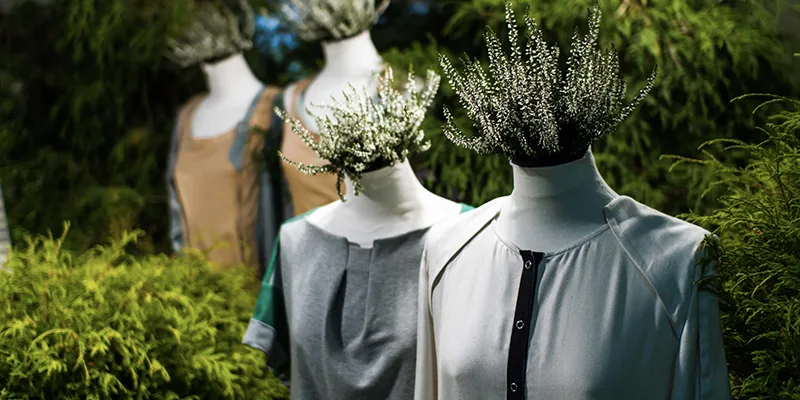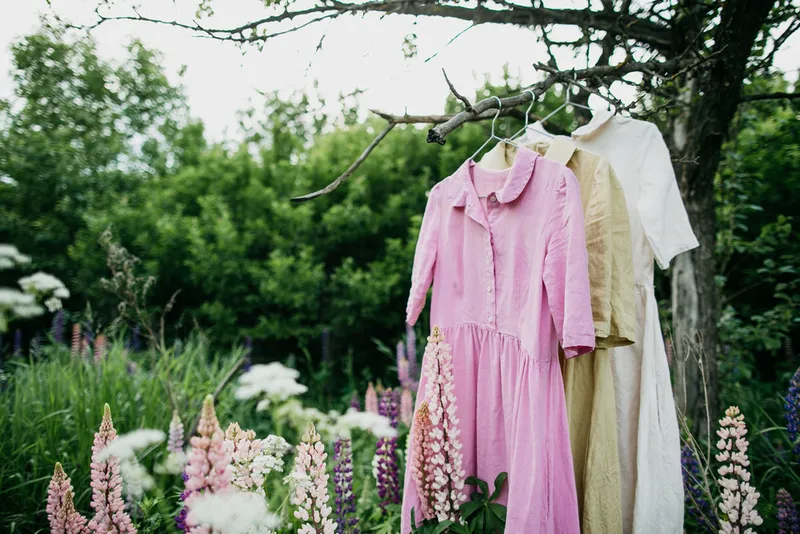Fast fashion: What's the big deal?
Cheaper prices and shorter fashion cycles mean shoppers are encouraged to keep buying more to stay in style. What does it mean for the planet?
The human contribution to climate change often seems abstract, and therefore easy to ignore. Rising sea levels, increasing temperatures, and CO2 emissions, all feel a bit, well, distant. It's a different story, however, with our clothes because every time we get dressed in the morning, the human impacts of climate change touch the surface of our skin.
That's because the textile industry has become one of the world's worst polluters and drivers of climate change. Take denim jeans, a worldwide favourite. Making just a single pair requires up to 10,000 litres of water — that's roughly enough to quench the thirst of an average adult for more than 13 years.

Okay, but at least I don't fly
Nice try. Turns out, the fashion industry is worse for the environment than aviation. Much worse. In 2018, air travel — both freight and passenger — accounted for up to 2.5 percent of global carbon dioxide (CO2) emissions. The fashion industry was responsible for four times that.
Belching out pollution is one thing, but making clothes also sucks up finite resources — using around 93 billion cubic meters of water a year. Cotton, one of the industry's favourite raw materials, is so thirsty it's responsible for 2.6 percent of global water usage.
According to recent research, the textile industry has also become a major contributor to microplastic pollution. This is caused by synthetic textiles, such as polyester or nylon, which shed tiny bits of plastic.
These fibres — often too small to see with the naked eye — find their way into our oceans where they harm sea life by altering their feeding behaviour, slowing appetites, and blocking digestion. They also end up in our food and water. Researchers estimate that a single European consumer of shellfish eats up to 11,000 pieces of microplastic a year. It's still unclear exactly how what damage this does to the human body.
I don't eat seafood and I'm not interested in fashion
That doesn't mean you don't benefit from the industry's fast fashion culture.
Whether your wardrobe is bursting or you just get a pair of socks for Christmas, over-production in the fashion industry has made clothing instantly available to consumers at prices that are not sustainable. Take UK fashion retailer Pretty Little Thing, which was selling a dress on its website for just €0.09 ($0.11) last year.
Fast fashion is a business model that creates a sense of urgency to encourage impulse buying. This, in turn, fuels garment production. If population growth continues as predicted, some estimates suggest the global fashion industry could go from selling 62 million tons a year in 2017 to 102 million tons by 2030.

Image source: Shutterstock
As brands drive new trends by rotating their stocks of cheap clothes, shoppers are likely to buy more items they wear less frequently, creating a spiral to the bottom. Across much of the EU, household spending on clothing dropped between 1996 and 2012, though the number of garments EU citizens buy has risen by 40 percent over the past decades.
To date, the biggest markets for the sale of clothes are in China, the US, and the EU. But with increasing economic development and population growth in Africa, India, and South America, the demand and taste for a fast-fashion lifestyle are expected to grow.
I could buy eco-friendly clothes
True. And some designers are going all out to be environmentally friendly, but such products are not within everyone's budget.
High street brands have also responded to environmental concerns by launching various sustainability lines. H&M says clothes in its ‘Conscious' collection, for example, are made with at least 50 percent sustainably sourced materials.
But vague and undefined words like "conscious," "ethical," and "sustainable" have led to accusations of "greenwashing," meaning brands convey a false impression of being environmentally sound while continuing bad practices.
This was made clear in a study by retail analyst Edited, which showed that between 2017 and 2019, fashion brands in the US and UK were describing new clothes as "eco," "vegan," and "conscious" at record levels. In fact, the word ‘sustainable' increased by 125 percent. Yet, at the same time, these products made up just 3 percent of all the items available online.

Source: Shutterstock
What am I supposed to do about it?
We'll come to that, but first, let's talk about legislation.
To clean up the textile industry, laws need to be passed by the biggest polluters such as China and the US, which was the world's biggest fashion market until 2019. The election of President Joe Biden in 2020 brought a new tone to US politics as he rejoined the Paris Climate Agreement and signalled a commitment to force more transparency within supply chains.
Exactly what that might mean for the country's fashion industry remains to be seen.
For its part, the EU has adopted a Circular Economy Action Plan, which sets out targets to boost recycling and reduce landfill waste. Goals include an obligation for the Member States to collect textile waste separately by 2025.
So, I'm off the hook then?
No. Responsibility also rests with the consumer. Competition among the biggest fashion brands is so tough that environmental improvement will be slow if we continue to buy polluting materials.
That said, shunning fast fashion is already becoming a trend in its own right. Options such as upcycling materials, buying vintage, or mending broken items are increasingly snatching the limelight. According to one 2020 study, the online thrift boom that emerged during the COVID-19 pandemic could lead secondhand clothing sales to outgrow fast fashion by 2030.
Bur for the tides to really turn, it will take a concerted effort on many fronts. If we can achieve that, the clothes we wear could cease to be just the latest fashion but also become part of the climate change solution.
(This article by author Thomas Gordon-Martin was originally published on Deutsche Welle.)
Edited by Suman Singh
(Disclaimer: The views and opinions expressed in this article are those of the author and do not necessarily reflect the views of YourStory.)







